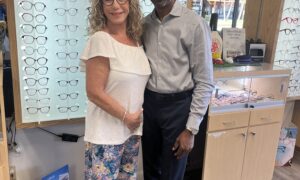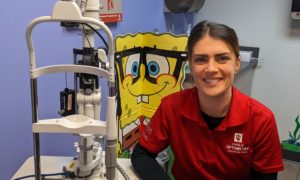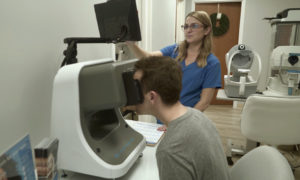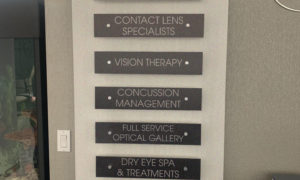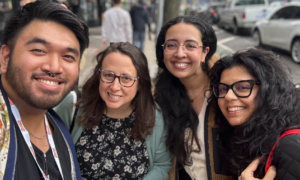
Brittany M. Mitchell, OD
Alabama Vision & Hearing Center
Birmingham, AL
Open the Door to Success for Former Wearers
“To be successful with multifocal contact lenses, you have to believe in them and recommend them,” says Brittany M. Mitchell, OD. “And your positivity comes across to the patient.”
At her practice, that process of recommending multifocals is built into the system. In the intake, staff asks questions about vision. (e.g., “Are you having any trouble seeing the computer?”) and notes the answer in the record. They present a near-reading card, which often highlights a patient’s struggle to see up close. The staff is trained to then suggest, “There is new technology in multifocal contact lenses that can help.”
A prime opportunity is with former contact lens wearers. The Multi-sponsor Surveys’ 2015 Gallup Study of the U.S. Multi-Focal Contact Lens Market shows that 80 percent of former wearers are interested in trying new multifocal contact lens technology designed to improve near vision and intermediate vision.

Dr. Mitchell has turned that renewed interest into an action plan. “We maintain a list of patients who were not fully successful with contact lens options for presbyopia,” she explains. “Then we let these dropouts know about innovative new options because we know they’re interested in trying multifocal contacts again.”
The MSI’s 2015 Gallup study highlights a wide variety of attributes that former wearers say are important in choosing a multifocal contact lens. Topping the list: health, care and handling, and vision at various distances. Dr. Mitchell communicates advances in multifocal lens technology since the perspectives of former wearers may be driven by their past experiences.
Dr. Mitchell and the office team present the benefits of multifocal contact lenses in providing clear vision, expanding their range of vision, and freeing them from eyeglasses, all attributes that patients say they value. “We explain how advances in the technology make this possible,” she adds.
Dr. Mitchell is convinced that a broad spectrum of presbyopic patients will benefit from multifocal contact lenses, if only ECPs will take the time to understand the technology advances, explain the benefits—and, in some cases, shed residual notions of past technology that fell short of expectations.
“We let dropouts know about innovative new options because we know they’re interested in trying multifocal contacts again.”
“Doctors need to talk more about technology advances because our patients—including Gen-Xers and Boomers—hear about innovative technology in the latest sleep monitor or mobile phone,” says Dr. Mitchell. “They want to know they’re getting that same high level of innovation in their eyecare.”
Practitioners also need to initiate discussions about innovative technology, Dr. Mitchell believes. She notes that the MSI’s 2015 Gallup study reveals that the patient (and not the practitioner) initiates the conversation about multifocal contact lenses more than four times in ten. “That’s not the case here,” says Dr. Mitchell. “We see ourselves as the prescribers who should be presenting technology that can change lives—not just fielding inquiries from our patients about what’s new.”
Dr. Mitchell believes that there are multiple benefits to the practice that takes the time to introduce and fully explain innovative technology and its benefits. Success is largely tied to getting the conversation going, says Dr. Mitchell. “Fitting multifocal contact lenses really opens the door to great opportunities to improve our patients’ lives,” she says, “and with innovative product

Excerpted from “Capturing the Presbyopic Opportunity.” UFP.0142.USA.16
To download the entire report, click here.





